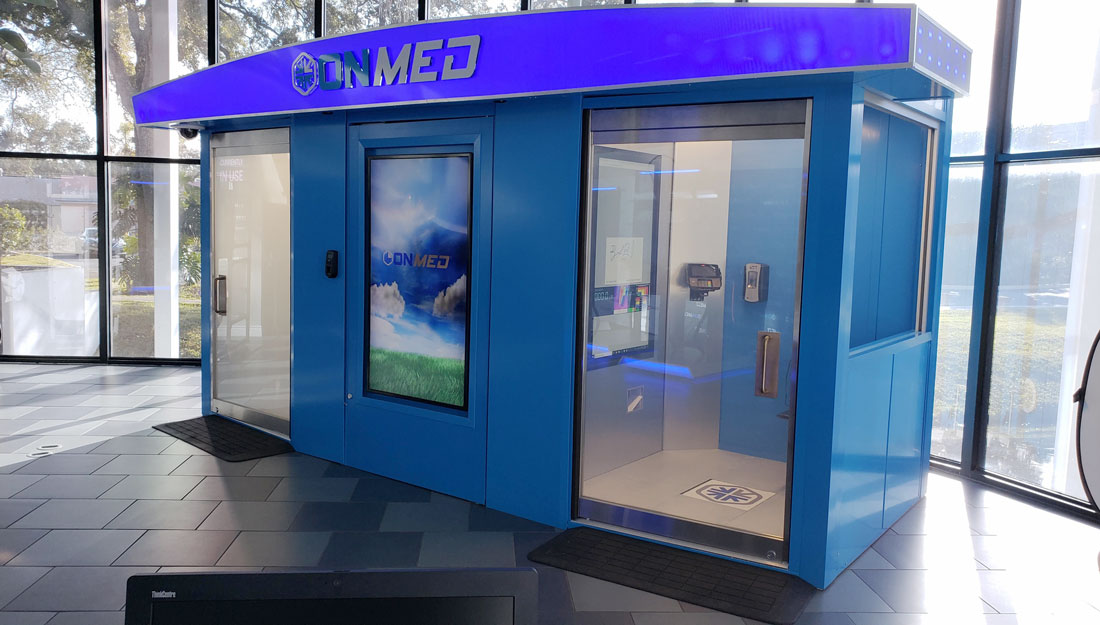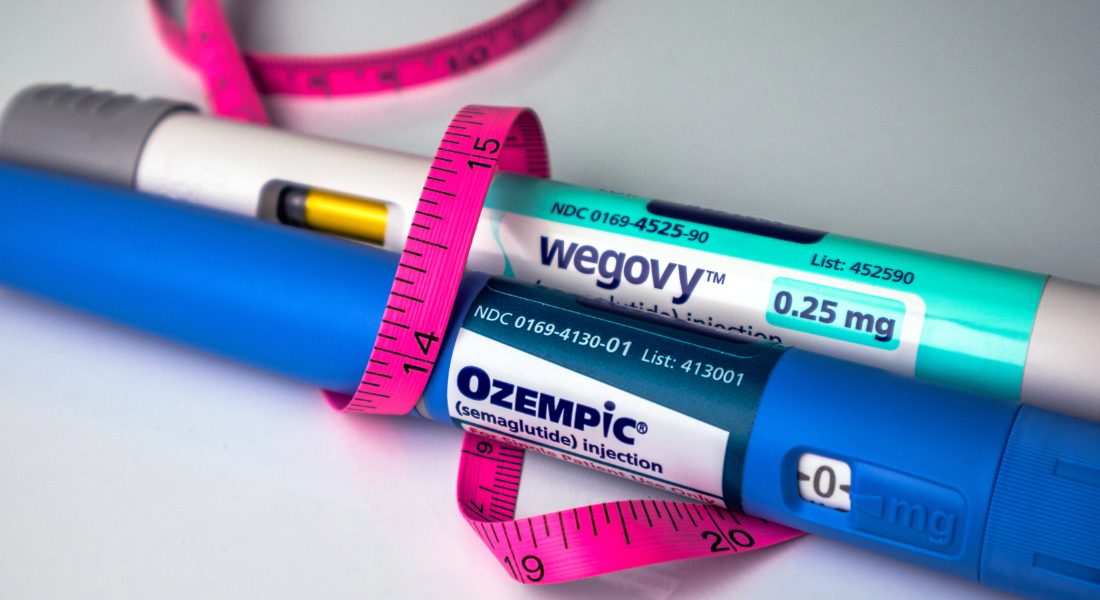Texas A&M, OnMed launch self-contained telemedicine station to address rural health care crisis

Rural hospitals in the United States have been closing at record speed, with 21 closing in Texas alone since 2010. Now, the COVID-19 crisis threatens hundreds more. As a result, rural residents must travel long distances for urgent and emergency care.
To address this growing crisis, Texas A&M University Health Science Center (Texas A&M Health) has teamed with Florida-based company OnMed® to deploy Texas’ first telehealth station of its kind. The unit was delivered to Cameron, Texas, (Milam County) at the Milam County Sheriff’s Office in July. This area, which has a population of more than 25,000, has lost two rural hospitals in the last two years. Now, residents must drive 35 minutes to the nearest hospital when they can’t immediately see their local care provider.
“Milam County is the perfect location for this technology due to the recent loss of critical rural hospitals,” said the project’s principal investigator, Joy Alonzo, PharmD, M.Engineering, a clinical assistant professor in the Department of Pharmacy Practice at the Texas A&M Irma Lerma Rangel College of Pharmacy. “Texas A&M is committed to the improvement of health care and health outcomes in rural Texas. This unit is the embodiment of technical innovations designed specifically to improve rural access to care and enhance the patient experience.”
The self-contained OnMed® telemedicine station will provide patients with a live virtual consultation with a licensed clinician who can make a diagnosis and dispense prescription medications on the spot.
Features and services of the station include:
- Measuring basic vitals like height, weight and blood pressure
- Thermal imaging to provide body temperature and diagnose infection
- Readings of respiration and blood oxygen saturation
- On-site robotic dispensing of hundreds of common prescriptions
- Option to securely transmit results to the patient’s primary care physician
- Ability to provide paper prescriptions, e-prescriptions to preferred pharmacies, referrals and self-service lab kits for diagnostic testing
After every patient visit, the station is thoroughly cleaned using high-output ultraviolet surface and air sanitization to eliminate pathogens.
While the telemedicine station addresses access to health care in rural areas, Alonzo says this game-changing innovation could also help with a health crisis such as the current coronavirus pandemic.
“Under the current circumstances, a telemedicine station like this one can provide access to care for follow-up and same-day appointments that are not urgent without exposing high-risk patients,” Alonzo said. “In rural counties, it can provide access to care when primary care is not available without having patients drive 30 to 40 miles to an ER and unnecessarily tying up critical resources.”
OnMed® provides users with more than just a teleconference with a doctor. When the patient enters the station, they receive a thermal scan to take their temperature, the floor serves as a scale, and blood pressure and heart rate devices are integrated into the seating area. A remote operated stethoscope is also available to assist a clinician in evaluating the heart and lungs.
Additionally, a Food and Drug Administration-approved high definition camera deploys, allowing the physician to conduct a visual assessment to assist with their diagnosis. The unit can also safely dispense hundreds of common prescription medications with the approval of a clinician or pharmacist through a secure, robotically automated vault.
“OnMed® is the perfect solution for filling the gaps in rural health care,” said Austin White, founding partner and CEO of OnMed®. “Our stations can be located where they are needed most and go well beyond just a phone call. OnMed® offers a live face-to-face visit using the latest diagnostic tools and the ability to receive medication all in one sitting. It’s transformative technology that improves access and quality of care.”
This initiative is part of the Moonshot Research Project, a series of rural health innovations implemented by Texas A&M Health with support from Blue Cross and Blue Shield of Texas (BCBSTX). These innovations are designed to support collaborative care and healthy communities by targeting health care challenges facing rural and underserved populations in Texas. By exploring novel ways to solve rural health care problems, Texas A&M hopes to answer questions about how to deliver high quality care in rural areas that is financially sustainable and provides a template for best practices across rural America. Alonzo is leading a study of the telemedicine station in Cameron to determine whether it could be a viable option for rural areas with health care access challenges.
“Helping communities like Cameron address access to care during hours when clinics are not operational—and doing so in an affordable fashion—may provide answers for many small towns that cannot support 24/7 access to care in more traditional ways,” said Nancy Dickey, MD, executive director of the Texas A&M Rural and Community Health Institute and director of the Moonshot Research Project. “The feedback from the citizens of this county will help answer questions about how well the telemedicine station works and how acceptable patients find it in terms of getting health care assistance.”
Media contact: media@tamu.edu


